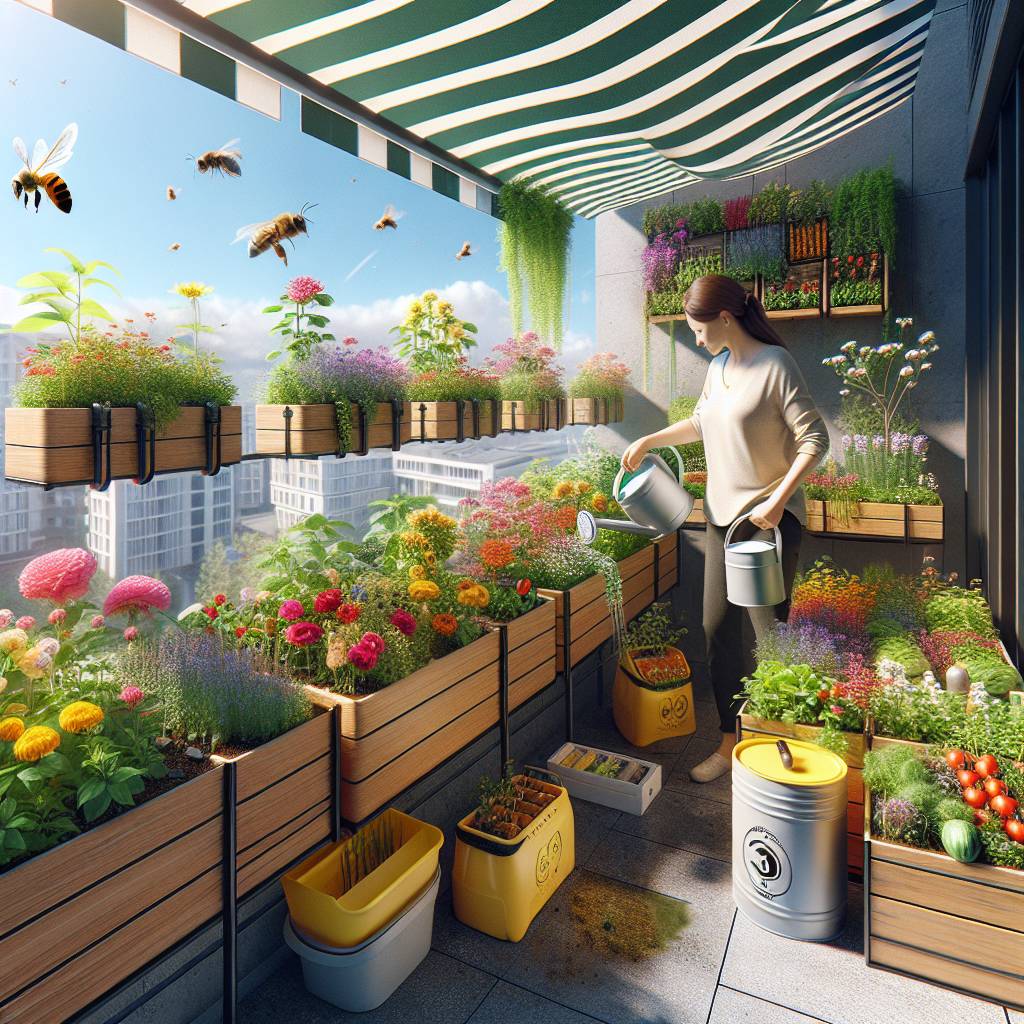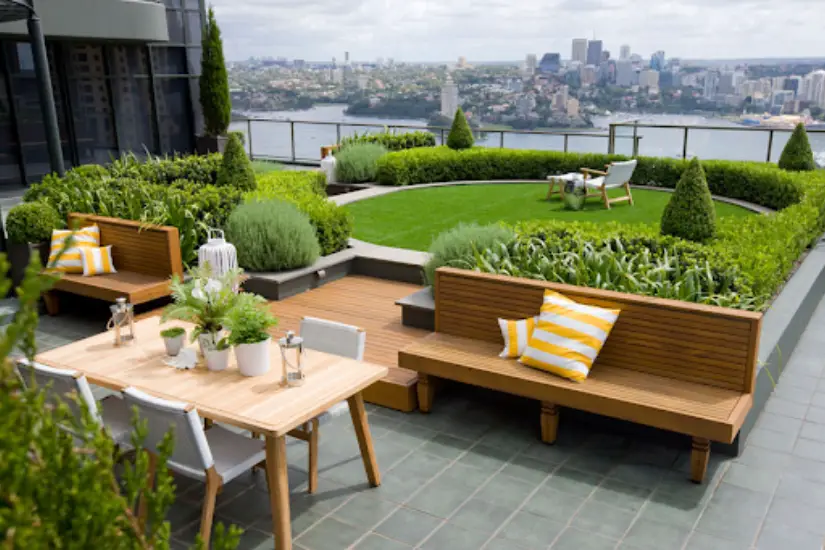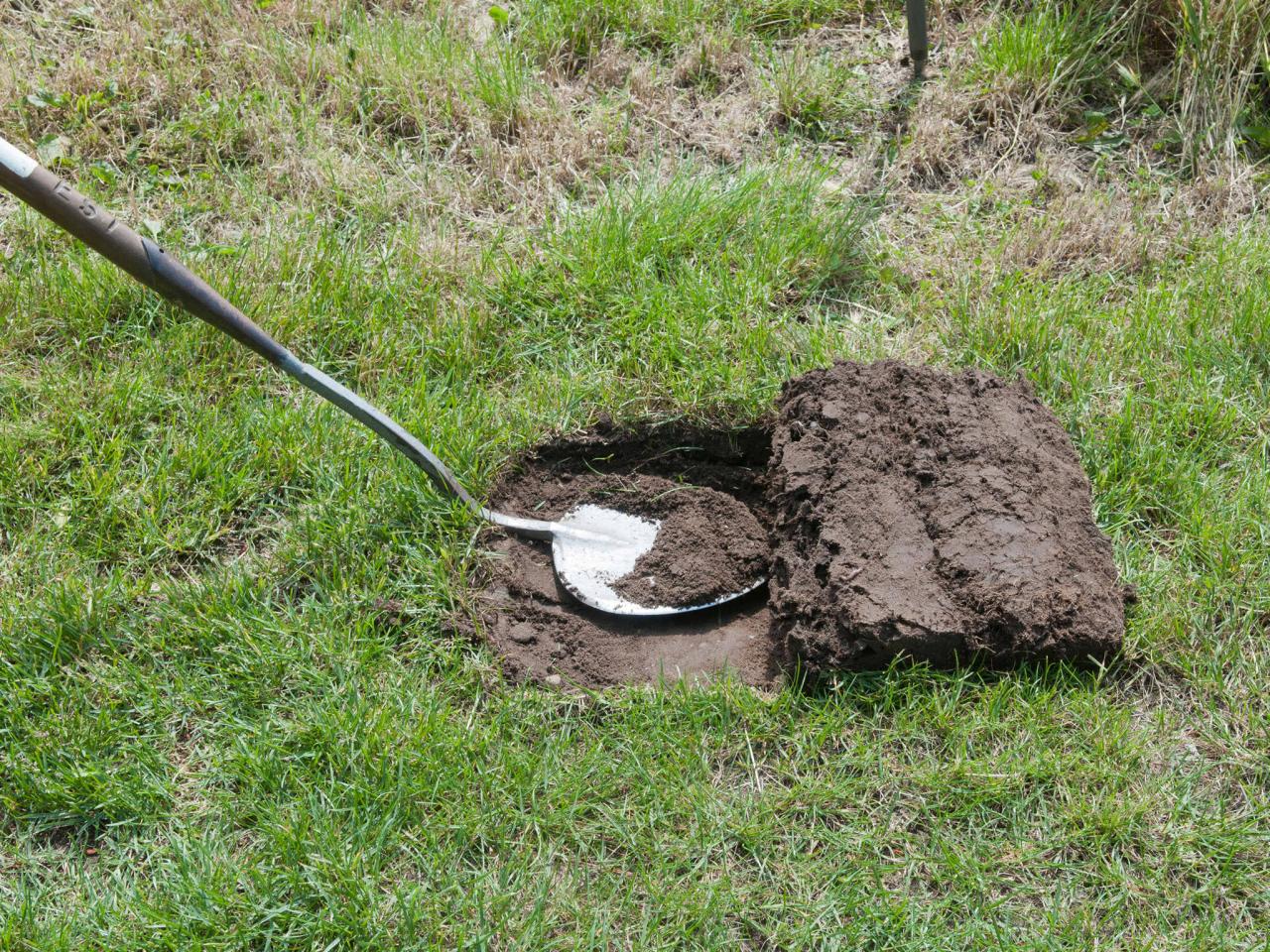Looking to spruce up your balcony with vibrant greenery? Whether you’re a gardening novice or a seasoned pro, mastering the art of seasonal balcony gardening can be both rewarding and challenging. As the seasons change, so do the needs of your plants. It’s all about finding that delicate balance between nurturing urban gardening through scorching summers and frosty winters.
From selecting the right plants for each season to maximizing limited space on balconies and dealing with unpredictable weather and heat, we’ve got you covered. Get ready to transform your outdoor oasis into a flourishing haven with our expert seasonal balcony gardening advice.
Key Takeaways
- Understand your balcony’s growing conditions to choose the right plants and containers for your garden.
- Implement effective water drainage solutions to prevent waterlogging and maintain healthy plant growth.
- Embrace vertical gardening techniques to maximize space and create a functional and aesthetic balcony garden.
- Practice practical watering tips to ensure that your balcony garden receives adequate moisture without overwatering.
- Choose low-maintenance plants and incorporate low-maintenance practices to simplify balcony gardening and reduce upkeep.
- When designing your balcony garden, prioritize both functionality and aesthetics to create an enjoyable outdoor space.
Essential Considerations for Balcony Gardening
Suitable Plants
Choosing the right plants is crucial. Look for urban gardening varieties that thrive in small spaces, such as herbs like basil, mint, or chives. These not only add a pop of green but also serve as useful additions to your kitchen. Consider compact vegetables like cherry tomatoes or peppers that can flourish in containers.
Furthermore, flowers like petunias and marigolds are excellent choices for adding color and vibrancy to your balcony garden without taking up too much space. These options ensure a visually appealing garden while maximizing the limited area available.
Sunlight Exposure
Full sun is essential for many plants’ growth and productivity. When planning your balcony garden, take note of the amount of sunlight your space receives throughout the day. Some plants require direct sunlight for several hours each day, while others may thrive in partial shade.
For instance, if your balcony gets ample sunlight exposure throughout the day, you can opt for sun-loving plants like rosemary and lavender that will benefit from these conditions. Conversely, if your balcony has limited direct sunlight due to surrounding buildings or trees casting shadows, focus on shade-tolerant plants such as ferns or begonias.
Container Selection
Selecting suitable containers is vital when engaging in seasonal balcony gardening. Lightweight yet durable materials are ideal since they make it easier to move the pots around as needed and reduce strain on your balcony’s structure.
Consider utilizing lightweight plastic or resin planters rather than heavy ceramic ones which might be difficult to relocate once filled with soil and plants. Moreover, hanging baskets can be an excellent option for cascading flowers or trailing vines without occupying precious floor space on your balcony.
In addition to being easy to transport when necessary, these containers offer flexibility in arranging your garden layout according to seasonal changes or aesthetic preferences.
Understanding Your Balcony’s Growing Conditions
Sunlight and Growth
Sunlight is crucial for the growth of plants. Assess how much sunlight your balcony receives to determine suitable plants. Some plants thrive in full sun, while others prefer partial shade.
Understanding the amount of sunlight your space gets is essential. This will help you choose the right plants that can thrive in those conditions. For example, if your balcony receives direct sunlight for most of the day, you could consider planting herbs like basil or rosemary that require ample sun exposure.
Wind Patterns and Microclimates
Understanding the wind patterns on your balcony is important as it affects plant health. Strong winds can damage delicate plants, so it’s crucial to position wind-sensitive ones strategically.
Observe potential microclimates on your balcony – areas with varying temperatures due to factors like walls or structures blocking sunlight. These microclimates create different growing conditions for various types of plants.
Considering these factors when planning a balcony garden allows you to make informed decisions about where to place specific plant varieties based on their tolerance for wind and temperature variations.
Temperature Variations
Temperature fluctuations throughout the day impact plant growth and health. It’s essential to consider both daytime and nighttime temperatures when selecting suitable plants for your balcony garden.
Different plant species have varying temperature requirements; some may thrive in heat while others prefer cooler conditions. By being aware of the temperature variations on your balcony, you can ensure that the chosen plants are well-suited to these conditions.
Effective Water Drainage Solutions for Balcony Gardens
Install Drainage Holes
Ensuring effective water drainage is crucial. Installing drainage holes in your containers is essential to prevent waterlogging. These holes allow excess water to escape, preventing the roots of your plants from sitting in standing water.
Containers without proper drainage can lead to root rot and other issues that may harm your plants. By providing an outlet for excess water, you can maintain a healthy growing environment for your balcony garden.
Use Gravel or Pebbles
In addition to drainage holes, using a layer of gravel or pebbles at the bottom of your containers can significantly improve water drainage. This layer creates space for excess water to collect underneath the soil, reducing the risk of overwatering and creating a healthier root system for your plants.
The gravel or pebbles act as a barrier between the soil and any standing water, allowing air circulation around the roots while preventing them from becoming saturated with moisture. This simple technique helps maintain optimal moisture levels within the soil while minimizing the risk of root diseases due to poor drainage.
Consider Self-Watering Containers
Another effective solution for managing water source in balcony gardens is using self-watering containers. These innovative planters feature a reservoir that holds excess water, allowing plants to draw up moisture as needed through capillary action.
Self-watering containers are designed with a wicking system that delivers just the right amount of moisture directly to the plant’s roots, promoting healthy growth without over-saturation. They provide an efficient way to manage watering schedules and ensure consistent hydration for your balcony garden plants during different seasons.
Choosing the Right Plants for Your Balcony Garden
Thriving in Specific Growing Conditions
It’s crucial to select plants that will thrive in your specific growing conditions. Consider the amount of sunlight your balcony receives and choose plants accordingly. For instance, if your balcony gets a lot of direct sunlight, opt for sun-loving plants like petunias, marigolds, or cherry tomatoes. On the other hand, if your balcony is shaded most of the day, look for shade-tolerant options such as ferns, impatiens, or begonias.
It’s essential to take into account the temperature and climate of your region when choosing houseplants for your balcony garden. Some plants may not withstand extreme heat or cold temperatures. Be mindful of this factor when deciding on which plants to include in your garden.
Compact Varieties and Vertical Gardening
When selecting plants for a seasonal balcony garden, consider opting for compact varieties that are well-suited for smaller spaces. Look for dwarf or bush varieties of vegetables such as patio tomatoes or bush beans. These types of plants are ideal because they don’t require a lot of room to grow but still produce an abundant harvest.
Another great option is to explore vertical gardening by incorporating climbing vines like cucumbers or pole beans that can be trained to grow upwards using trellises or stakes. This maximizes space utilization and adds visual interest to your balcony garden.
Diverse Selection: Edible Plants, Flowers, and Herbs
To create a vibrant and diverse balcony garden, consider including a mix of edible plants, flowers, and herbs. Edible options could range from lettuces and peppers to strawberries and culinary herbs like basil or mint.
In addition to providing fresh produce at arm’s reach from your kitchen,flowers add beauty and attract pollinators such as bees and butterflies which contribute positively towards plant growth on balconies with limited natural pollination sources nearby.
Moreover,herbs serve both practical purposes – enhancing culinary dishes – while also emitting delightful fragrances throughout the space.
Designing a Functional and Aesthetic Balcony Garden
Efficient Layout
Planning the layout of your garden is crucial. Utilize the available space by considering vertical elements like trellises or hanging baskets. These elements not only maximize space but also add visual interest to your small balcony.
Consider using a variety of containers, such as window boxes, railing planters, and even repurposed items like old bathtubs or wooden crates. This diverse selection can help you make the most of your limited space while creating an aesthetically pleasing arrangement.
Color Scheme and Decor
Incorporating a cohesive color scheme and decorative elements into your balcony garden can greatly enhance its overall aesthetic appeal. Choose plants with flowers or foliage that complement each other in terms of color, texture, and size. For example, pairing vibrant petunias with trailing ivy can create a visually appealing contrast.
Consider adding decorative touches such as colorful cushions for seating areas, outdoor rugs, or string lights to create an inviting atmosphere on your balcony. These simple additions can transform your small outdoor space into a cozy oasis.
Supporting Your Garden
Supporting tools are essential for maintaining a successful balcony garden. Invest in lightweight yet sturdy gardening tools that are suitable for smaller spaces. Tools such as compact trowels, hand pruners, and watering cans specifically designed for balconies will make gardening tasks more manageable.
Furthermore, consider the weight-bearing capacity of your balcony when choosing containers and furniture for your garden area. Ensure that the structural integrity of the balcony can support the added weight of soil-filled pots and planters to avoid any safety hazards.
Vertical Gardening Techniques for Balconies
Space-Saving Solutions
Maximizing vertical space is crucial. Utilize wall-mounted planters or hanging baskets to save space and create a lush garden even in a small area. By using vertical surfaces, you can grow an abundance of plants without taking up valuable floor space.
For instance, if you’re keen on growing herbs or flowers, consider installing wall-mounted planters. These allow you to make use of the often underutilized walls while adding a touch of greenery to your balcony.
Training Climbing Plants
To make the most of your limited balcony space, train climbing plants to grow vertically using supports like trellises or mesh panels. This not only creates a visually appealing display but also optimizes the available vertical area for planting various vegetables and ornamental vines.
For example, if you’re interested in growing tomatoes or cucumbers, training them to climb vertically will help prevent overcrowding and ensure they receive adequate sunlight for healthy growth.
Hydroponic and Aeroponic Systems
Exploring hydroponic or aeroponic systems can be an innovative way to practice urban gardening on balconies with limited floor space. These soil-less methods allow plants to thrive by receiving essential nutrients through water solutions rather than traditional soil-based planting.
Consider setting up hydroponic towers that enable you to grow vegetables such as lettuce and spinach without needing large pots or extensive horizontal space. Aeroponic systems provide another alternative by allowing roots to dangle freely in the air while being periodically misted with nutrient-rich water.
Practical Tips for Watering Your Balcony Garden
Thorough Watering
Watering your plants thoroughly is crucial. This means ensuring that the water reaches the roots of the plants. By doing so, you help them develop strong and healthy root systems. When watering, make sure to do it slowly to allow the soil to absorb the water properly.
It’s important not to overwater your plants as this can lead to root rot and other moisture-related issues. Overwatering can be detrimental to plant health, especially in a limited space like a balcony garden where drainage may not be as efficient as in traditional gardens.
Monitoring Soil Moisture Levels
Checking soil moisture levels regularly is essential for maintaining a healthy balcony garden. You can do this by inserting your finger into the soil or using a moisture meter. If the soil feels dry at about an inch below the surface, it’s time to water your plants again.
In a limited space environment such as a balcony garden, understanding when and how much water your plants need is vital for their well-being. Without proper monitoring, there’s a risk of underwatering or overwatering, both of which can have negative effects on plant growth.
Efficient Watering Methods
Consider utilizing drip irrigation systems or self-watering containers for efficient watering in your balcony garden. Drip irrigation systems provide controlled and targeted watering directly to the base of each plant, minimizing wastage and ensuring that each plant receives adequate moisture.
Self-watering containers are designed with built-in reservoirs that supply water to the plants as needed. These containers are beneficial for those who may have busy schedules or find it challenging to monitor their plants’ hydration levels consistently.
Ideal Containers for Balcony Gardening
Lightweight Containers
Choosing the right containers is crucial. Opt for lightweight materials like plastic, fiberglass, or resin. These materials make it easier to move your plants around and prevent the balcony from bearing too much weight.
Large pots are excellent for seasonal plants as they provide ample space for root growth. These pots can accommodate multiple plants at once, allowing you to create a diverse and vibrant garden on your balcony.
Self-Watering Capabilities
Select containers with built-in water reservoirs to ensure that your plants receive adequate hydration even during hot summer days. These self-watering containers help maintain moisture levels in the soil, reducing the frequency of manual watering.
For instance, consider using large pots with self-watering features such as a water tray or an internal watering system. This setup allows you to go longer between watering sessions while ensuring that your seasonal plants remain healthy and hydrated.
Vertical Space Optimization
To maximize space on your balcony, explore options such as hanging baskets or railing planters. Hanging baskets are perfect for trailing flowers and vines which can add a beautiful cascading effect to your outdoor space.
Moreover, large pots placed strategically in railing planters not only save floor space but also create an eye-catching display of seasonal blooms at varying heights. This arrangement adds depth and visual interest to your balcony garden while making efficient use of limited space.
Implementing Low-Maintenance Practices in Balcony Gardening
Selecting Low-Maintenance Plants
Choosing the right plants is crucial. Opt for low-maintenance options that require minimal care and attention. Look for perennials such as lavender, ornamental grasses, or dwarf shrubs. These plants are resilient and can withstand changing weather conditions without needing excessive upkeep.
You can also consider incorporating succulents like aloe vera, sedum, or echeveria into your balcony garden. These plants have the ability to store water in their leaves, allowing them to thrive with infrequent watering. By selecting low-maintenance plants, you’ll spend less time tending to your garden and more time enjoying its beauty.
Mulching the Soil Surface
To keep your seasonal balcony garden healthy and thriving with minimal effort, consider mulching the soil surface. Mulch acts as a protective layer that helps retain moisture in the soil while preventing weed growth. This means you won’t have to water your plants as frequently, saving you time and effort.
Applying slow-release fertilizers is another effective way to minimize maintenance in your balcony garden. These fertilizers gradually release nutrients over an extended period of time, reducing the need for frequent feeding sessions. With this approach, you can ensure that your plants receive essential nutrients without having to constantly monitor their feeding schedule.
Embracing Low-Maintenance Practices
Incorporating low-maintenance practices into your seasonal balcony gardening routine can significantly reduce the amount of time and effort required to keep your plants healthy.
Closing Thoughts
Congratulations on reaching the end of this balcony gardening journey! You’ve gained valuable insights into creating a thriving green oasis in a limited space. By understanding your balcony’s unique conditions, choosing the right plants, designing for both function and beauty, and implementing smart watering and maintenance practices, you’re well-equipped to elevate your gardening game. Remember, just like nurturing a garden, your balcony oasis will flourish with attention and care. So, roll up your sleeves, grab your gardening tools, and let’s turn those balcony dreams into a lush reality!
Now, armed with these seasonal balcony gardening tips, it’s time to put them into action. Start by assessing your balcony’s specific characteristics and envisioning the garden you want to create. Then, dive into the exciting world of plant selection and design. With each step, keep in mind the unique personality of your balcony space and watch as it transforms into a green haven that reflects your creativity and care.
Frequently Asked Questions
What are the essential considerations for balcony gardening?
When starting a balcony garden, it’s crucial to consider factors like sunlight exposure, wind conditions, and space limitations. Understanding these elements will help you choose suitable plants and design an effective layout for your balcony garden.
How can I effectively water my balcony garden?
To ensure proper hydration for your plants, consider using self-watering containers or installing a drip irrigation system. Be mindful of the specific watering needs of each plant species and adjust your watering schedule accordingly.
What are some low-maintenance practices I can implement in balcony gardening?
Opt for low-maintenance plants such as succulents or herbs that require minimal attention. Also, incorporating self-watering systems and choosing lightweight, durable containers can reduce the maintenance workload while keeping your balcony garden thriving.
What are some ideal containers for balcony gardening?
When selecting containers for your balcony garden, prioritize options that offer good drainage and adequate space for root development. Lightweight materials like plastic or resin may be preferable to heavy ceramic pots due to their ease of handling.
How do I choose the right plants for my balcony garden?
Consider factors such as sunlight requirements, available space, and climate conditions when choosing plants. Opt for varieties that thrive in container environments and complement each other visually to create an appealing and harmonious balcony garden display.






